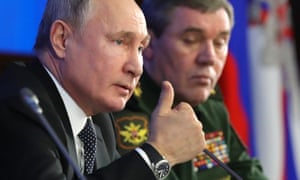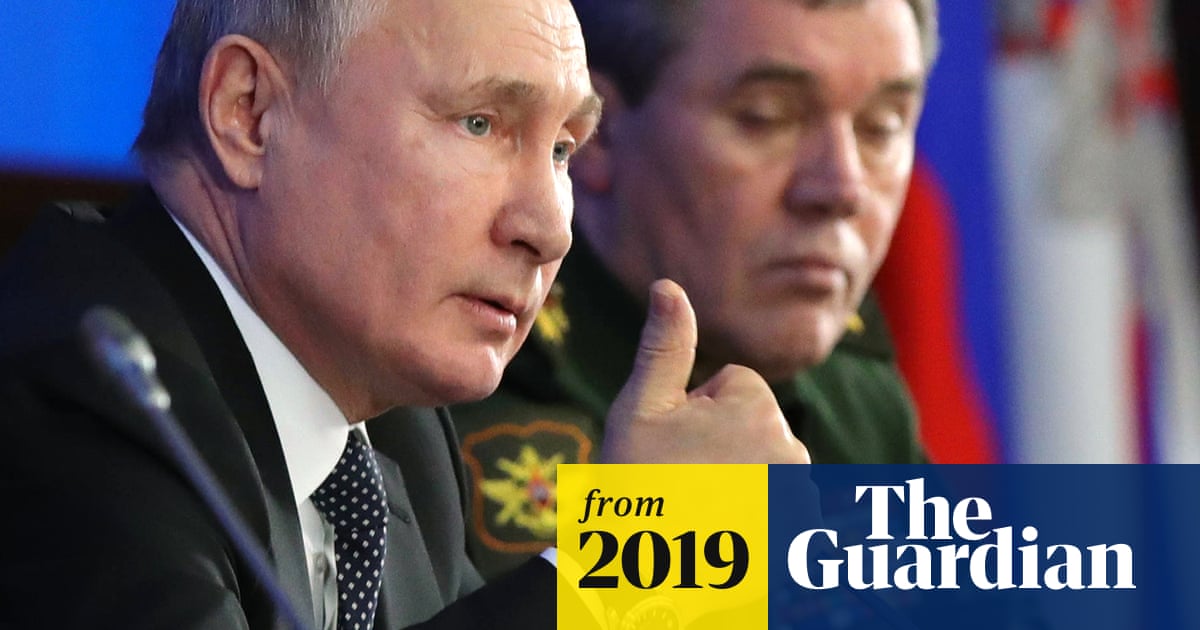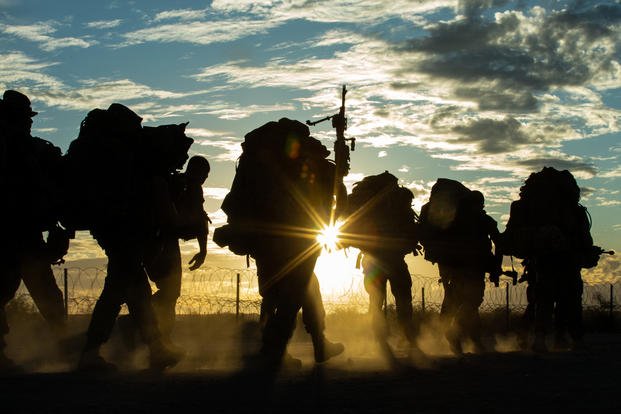Continued.....
Recognition of the high stakes and costs of war has nudged some of Iran’s Gulf rivals to seek de-escalation even as they continue to back the Trump administration’s “maximum pressure” approach. The United Arab Emirates has opened lines of communication with Tehran, and Saudi Arabia has engaged in serious dialogue with Yemen’s Houthis.
The potential for conflict has also prompted efforts, led by French President Emmanuel Macron, to help the United States and Iran find a diplomatic off-ramp. U.S. President Donald Trump, eager to avoid war, has been willing to hear out his proposal, and the Iranians are also interested in any proposition that provides some sanctions relief.
But with deep distrust, each side has tended to wait for the other to make the first concession. A diplomatic breakthrough to de-escalate tensions between the Gulf states and Iran or between Washington and Tehran remains possible. But, as sanctions take their toll and Iran fights back, time is running out.
U.S. President Donald Trump and North Korea’s leader Kim Jong Un talk before a meeting in the Demilitarized Zone in Panmunjom on June 30. BRENDAN SMIALOWSKI/AFP via Getty Images
United States-North Korea
The days of 2017, when U.S. President Donald Trump and North Korean leader Kim Jong Un hurled insults at each other and exchanged threats of nuclear annihilation, seemed distant during most of 2019. But tensions are escalating.
The dangers of 2017 yielded to a calmer 2018 and early 2019. The United States halted most joint military drills with South Korea, and Pyongyang paused long-range missile and nuclear tests. U.S.-North Korea relations thawed somewhat, with two Trump-Kim summits. The first—in Singapore in June 2018—produced a flimsy statement of agreed principles and the possibility of diplomatic negotiations. The second—in Hanoi in February 2019—collapsed when the gulf between the two leaders on the scope and sequencing of denuclearization and sanctions relief became clear.
Since then, the diplomatic atmosphere has soured. In April 2019, Kim unilaterally set an end-of-year deadline for the U.S. government to present a deal that might break the impasse. In June, Trump and Kim agreed, over a handshake in the demilitarized zone that separates the two Koreas, to start working-level talks. In October, however, an eight-hour meeting between envoys in Sweden went nowhere.
The two leaders have at times floated the idea of a third summit, but they have backed away at least for the time being. That may be for the best: Another ill-prepared meeting could leave both sides feeling dangerously frustrated.
Another ill-prepared meeting could leave both sides feeling dangerously frustrated.
Meanwhile, Pyongyang—which continues to seek leverage to obtain sanctions relief and an end to joint military drills—stepped up short-range ballistic missile tests, which are widely understood not to be covered by the unwritten freeze. North Korea seemed to be motivated by both practical reasons (tests help perfect missile technology) and political ones (those tests appear intended to pressure Washington to propose a more favorable deal). In early December, Pyongyang went further, testing what appeared to be the engine for either a space-launch vehicle or a long-range missile and related technology, at a site that Trump claimed Kim had promised to dismantle.
Although Pyongyang’s warning of a “Christmas gift” for Washington if the United States does not propose what Kim deems a satisfactory way forward had not materialized at the time of writing, prospects for diplomacy seem to be dimming.
Yet both sides should think about what will happen if diplomacy fails. If the North escalates its provocations, the Trump administration could react much like it did in 2017, with name-calling and efforts to further tighten sanctions and by exploring military options with unthinkable consequences.
That dynamic would be bad for the region, the world, and both leaders. The best option for both sides remains a confidence-building, measure-for-measure deal that gives each
modest benefits. Pyongyang and Washington need to put in the time to negotiate and gauge possibilities for compromise. In 2020, Trump and Kim should steer clear of high-level pageantry and high-drama provocations, and empower their negotiators to get to work.
Security personnel stand guard as they block a road during a lockdown at Maisuma locality of Srinagar, Kashmir, on Sept. 27. TAUSEEF MUSTAFA/AFP via Getty Images
Kashmir
After falling off the international radar for years, a flare-up between India and Pakistan in 2019 over the disputed region of Kashmir brought the crisis back into sharp focus. Both countries lay claim to the Himalayan territory, split by an informal boundary, known as the Line of Control, since the first Indian-Pakistani war of 1947-48.
First came a February suicide attack by Islamist militants against Indian paramilitaries in Kashmir. India retaliated by bombing an alleged militant camp in Pakistan, prompting a Pakistani strike in Indian-controlled Kashmir. Tensions spiked again in August when India revoked the state of Jammu and Kashmir’s semiautonomous status, which had served as the foundation for its joining India 72 years ago, and brought it under New Delhi’s direct rule.
Prime Minister Narendra Modi’s government, emboldened by its May reelection, made the change in India’s only Muslim-majority state without any local consultation. Not only that: Before announcing its decision, it brought in tens of thousands of extra troops, imposed a communications blackout, and arrested thousands of Kashmiris, including the entire political class, many of whom were not hostile to India.
These moves have exacerbated an already profound sentiment of alienation among Kashmiris that will likely further fuel a long-running separatist insurgency. Separately, the Indian government’s new citizenship law, widely regarded as anti-Muslim, has sparked protests and violent police responses in many parts of India. Together with the actions in Kashmir, these developments appear to confirm Modi’s intention to implement a Hindu nationalist agenda.
The Indian government’s actions in Kashmir, coupled with India’s new citizenship law, appear to confirm Modi’s intention to implement a Hindu nationalist agenda.
New Delhi’s claims that the situation is back to normal are misleading. Internet access remains cut off, soldiers deployed in August are still there, and all Kashmiri leaders remain in detention. Modi’s government seems to have no road map for what comes next.
Pakistan has tried to rally international support against what it calls India’s illegal decision on Kashmir’s status. But its cause is hardly helped by its long record of backing anti-India jihadis. Moreover, most Western powers see New Delhi as an important partner. They are unlikely to rock the boat over Kashmir, unless violence spirals.
The gravest danger is the risk that a militant attack sets off an escalation. In Kashmir, insurgents are lying low but still active. Indeed, India’s heavy-handed military operations in Kashmir over the past few years have inspired a new homegrown generation, whose ranks are likely to swell further after the latest repression. A strike on Indian forces almost certainly would precipitate Indian retaliation against Pakistan, regardless of whether Islamabad is complicit in the plan. In a worst-case scenario, the two nuclear-armed neighbors could stumble into war.
External actors should push for rapprochement before it is too late. That won’t be easy. Both sides are playing to domestic constituencies in no mood for compromise. Resuming bilateral dialogue, on hold since 2016, is essential and will necessitate concerted pressure, particularly from Western governments. Any progress requires Pakistan taking credible action against jihadis operating from its soil, a nonnegotiable precondition for India to even consider engaging. For its part, India should lift the communications blackout, release political prisoners, and urgently reengage with Kashmiri leaders. Both sides should resume cross-border trade and travel for Kashmiris.
If a new crisis emerges, foreign powers will have to throw their full weight behind preserving peace on the disputed border.
Members of the National Bolivarian Militia take part in military exercises in Caracas, Venezuela, on Sept. 16. MATIAS DELACROIX/AFP via Getty Images
Venezuela
Venezuela’s year of two governments ended without resolution. President Nicolás Maduro is still in charge, having headed off a civil-military uprising in April and weathered a regional boycott and a stack of U.S. sanctions. But his government remains isolated and bereft of resources, while most Venezuelans suffer from crushing poverty and collapsing public services.
Juan Guaidó, who as National Assembly head laid claim to the interim presidency last January, attracted huge crowds and foreign backing for his demand that Maduro, reelected in a controversial poll in 2018, leave office. Yet the unpopular government’s survival has offered Guaidó, as well as the United States and its Latin American allies such as Brazil and Colombia, harsh lessons. No one can rule out the government’s collapse. Still, hoping for that is, as one opposition deputy told my International Crisis Group colleagues, “like being poor and waiting to win the lottery.”
For a start, Maduro’s rivals underestimated his government’s strength—above all, the armed forces’ loyalty.
Maduro’s rivals underestimated his government’s strength—above all, the armed forces’ loyalty.
Despite hardship, poor communities remained mostly unconvinced by the opposition. U.S. sanctions heaped stress on the population and decimated an ailing oil industry, but were circumvented by shadowy actors working through the global economy’s loopholes. Gold exports and cash dollars kept the country afloat and enriched a tiny elite. Many of those left out joined the mass exodus of Venezuelans, now numbering 4.5 million, who in turn funneled remittances back home to sustain their families.
The crisis is having other ripple effects. The United Nations estimates that 7 million Venezuelans need humanitarian aid, many of them in border areas patrolled by armed groups, including Colombian guerrillas. Though sharing more than 1,300 miles of criminalized, violent, and largely unguarded border, the Colombian and Venezuelan governments no longer talk to each other, instead trading insults and blame for sheltering armed proxies. The border has become Venezuela’s primary flash point. In the meantime, the split between those Latin American countries backing Guaidó and those supporting Maduro has aggravated an increasingly polarized regional climate.
With the United States seemingly downplaying the possibility of a military intervention—even as Venezuelan opposition hard-liners pine for one—the issue is now whether Maduro’s obstinacy and the opposition’s and Washington’s lack of realism will mean a deepening crisis and possible flare-up, or whether more pragmatic voices can find a path to agreement. The omens are not overly promising. Government-opposition talks facilitated by Norway were suspended in September.
But there is still a negotiated way out of the turmoil. It would entail compromise from all sides: The opposition would need to drop its demand that Maduro leave now; the government would have to accept steps ensuring a credible and internationally monitored parliamentary election in 2020 as well as an early—and equally credible— presidential poll in the near future; and the U.S. government would need to incrementally relieve sanctions as progress is made toward a resolution. This would be an acceptable price for Venezuela’s peace and stability, and to avoid a far worse calamity.
A Ukrainian serviceman patrols along the front line with Russia-backed separatists not far from the town of Avdiivka, Donetsk region, on Nov. 7. ANATOLII STEPANOV/AFP via Getty Images
Ukraine
Ukraine’s comedian-turned-president, Volodymyr Zelensky, elected in April 2019, has brought new energy to efforts to end Kyiv’s six-year-old conflict with Russia-backed separatists in the country’s eastern Donbass region. Yet if peace seems slightly more plausible than it did a year ago, it is far from preordained.
Zelensky’s predecessor, Petro Poroshenko, negotiated the 2014-2015 Minsk agreements, which aim to end the Donbass conflict; they call for the separatist-held areas’ reintegration into Ukraine in exchange for their autonomy, or “special status.” But the agreements remain unimplemented as Kyiv and Moscow disagree on their specifics and sequencing.
Zelensky pledged while campaigning to make peace. He interpreted his and his party’s landslide wins in 2019 elections as mandates to do so. He started by negotiating mutual withdrawals from front-line positions and a cease-fire with Russia and its proxies. In September, he cut a deal with Russian President Vladimir Putin on a prisoner swap. The following month, he endorsed the so-called Steinmeier Formula put forward in 2016 by Frank-Walter Steinmeier, then Germany’s foreign minister and now its president, which proposed that elections in separatist-held areas would trigger first provisional, and then, if the vote was credible, permanent special status and reintegration into Ukraine.
Zelensky’s take on the formula required Ukrainian control in those territories before the vote. He nonetheless faced immediate domestic backlash from an unlikely coalition of military veterans’ organizations, far-right groups, and public intellectuals. In contrast, Moscow and separatist leaders welcomed Zelensky’s acceptance of the formula, despite his conditions.
In December, Zelensky and Putin met in Paris with Macron and German Chancellor Angela Merkel. The leaders failed to agree on Minsk sequencing but left with plans for a more comprehensive cease-fire, further disengagement at front-line positions, increased Organization for Security and Co-operation in Europe monitoring, and new crossing points for civilians at the line of contact separating Ukrainian and separatist forces.
Zelensky’s detractors at home appear satisfied he did not sell out in Paris. This gives him more room for maneuver.
Zelensky’s detractors at home appear satisfied he did not sell out in Paris. This gives him more room for maneuver.
If things go as planned, the next meeting in France, set for spring, should tackle other components of the Minsk agreement, including amnesties, further troop withdrawals, and a path to reintegrating separatist-held areas into Ukraine.
Much could go wrong. Cease-fire and disengagement plans might collapse and fighting could escalate. Even if they hold, Zelensky needs Moscow to compromise for peace to stand a chance. So far, however, although Moscow has been more amenable to deals with Zelensky than with his predecessor, its core positions remain unchanged: It denies being party to the conflict it initiated, fought in, and funded. It insists Kyiv should negotiate the Donbass region’s self-rule with separatist leaders.
Peace would offer clear dividends for Ukraine and carry benefits for Russia: It could bring sanctions relief and remove the burden of financial and military support to separatist-held areas. From his Western allies, Zelensky needs all the help he can get as he continues his charm offensive in eastern Ukraine and outreach to Moscow.
Robert Malley is president and CEO of the International Crisis Group. He served as a special assistant for the Middle East under President Barack Obama.
© 2019, The Slate Group
























